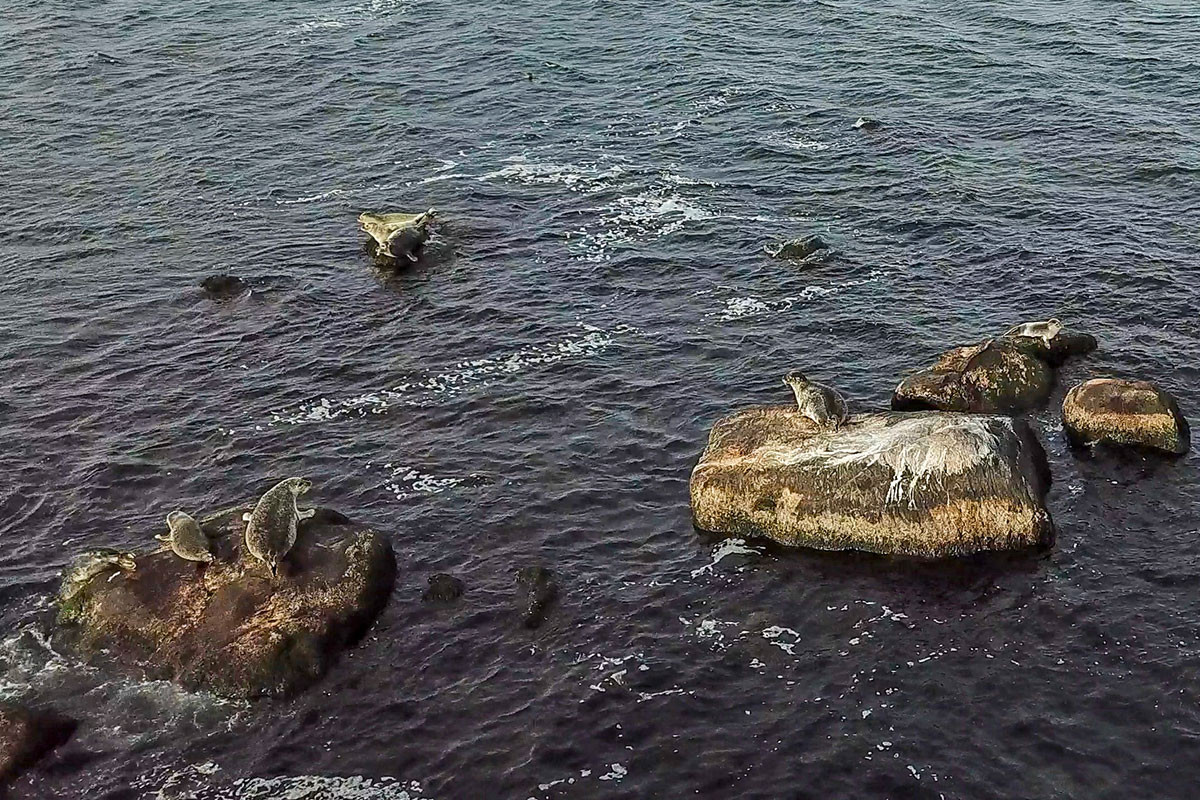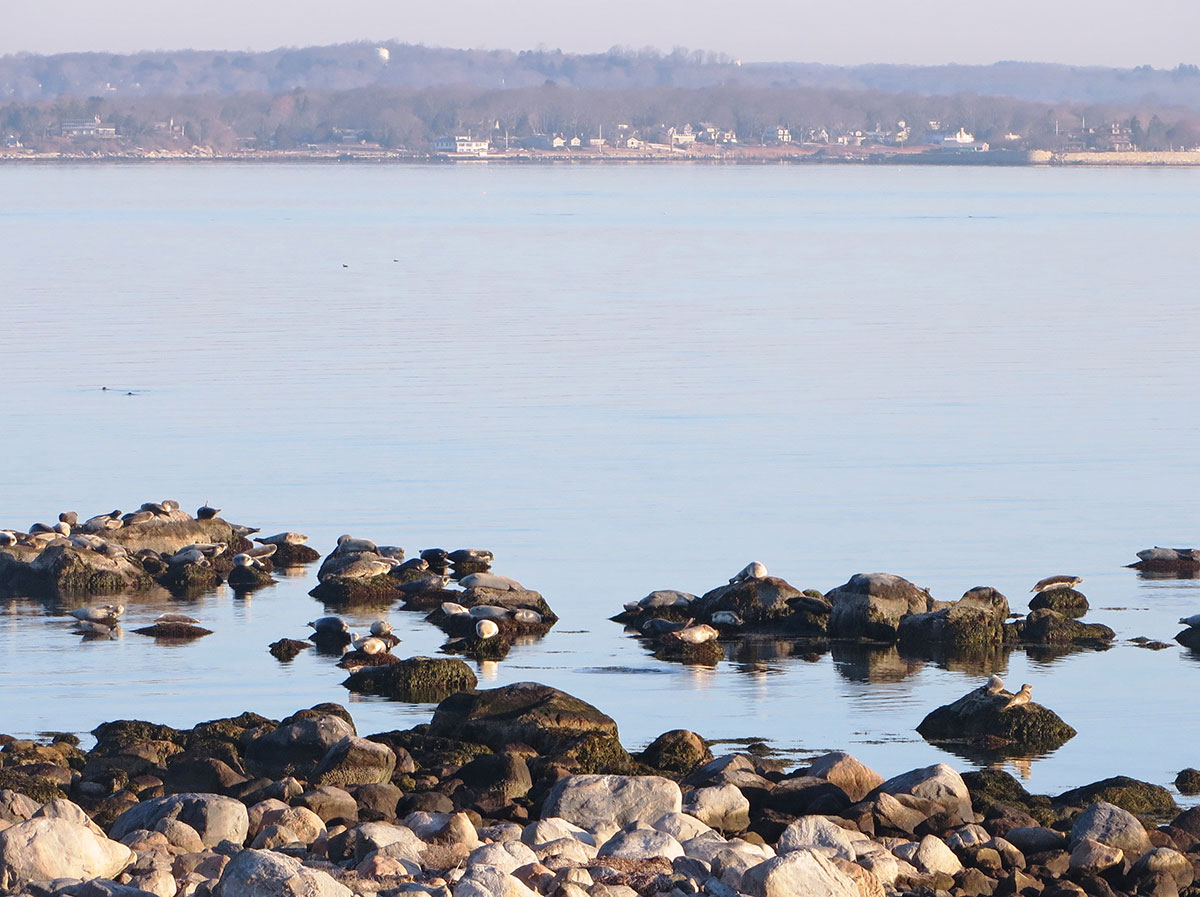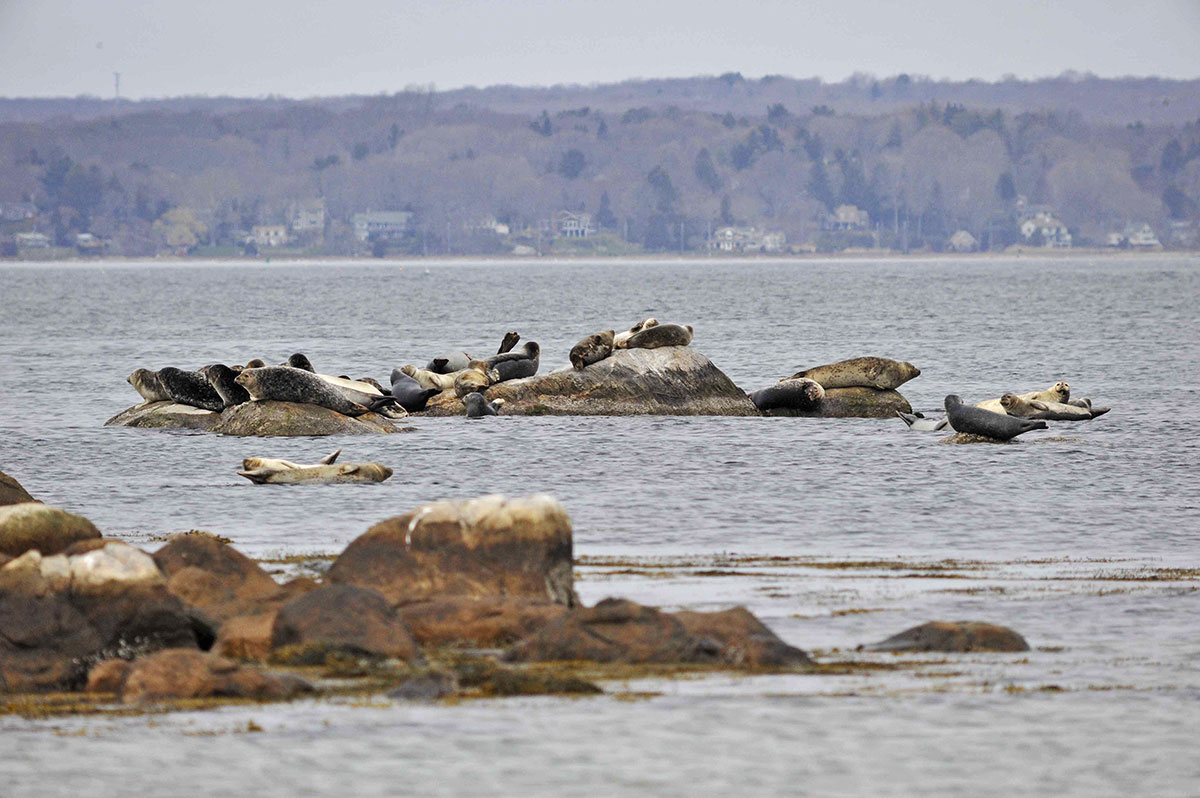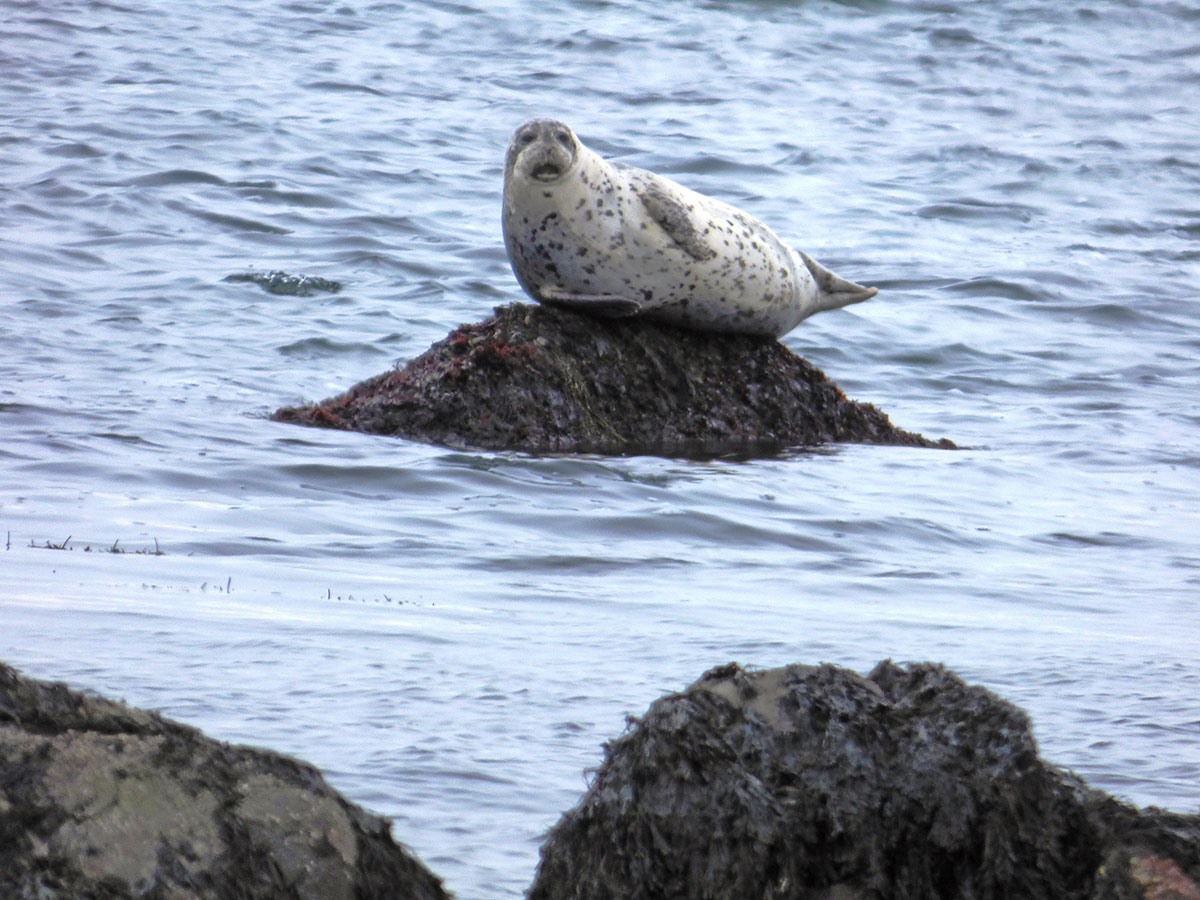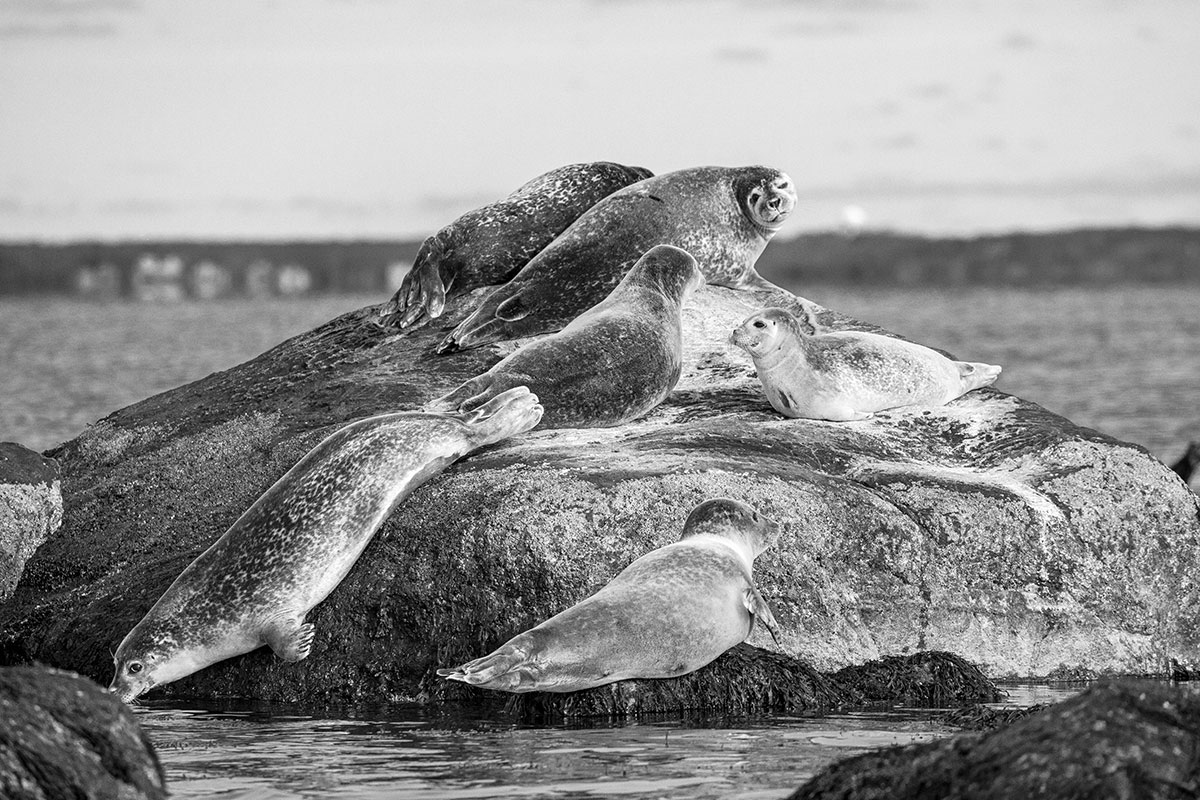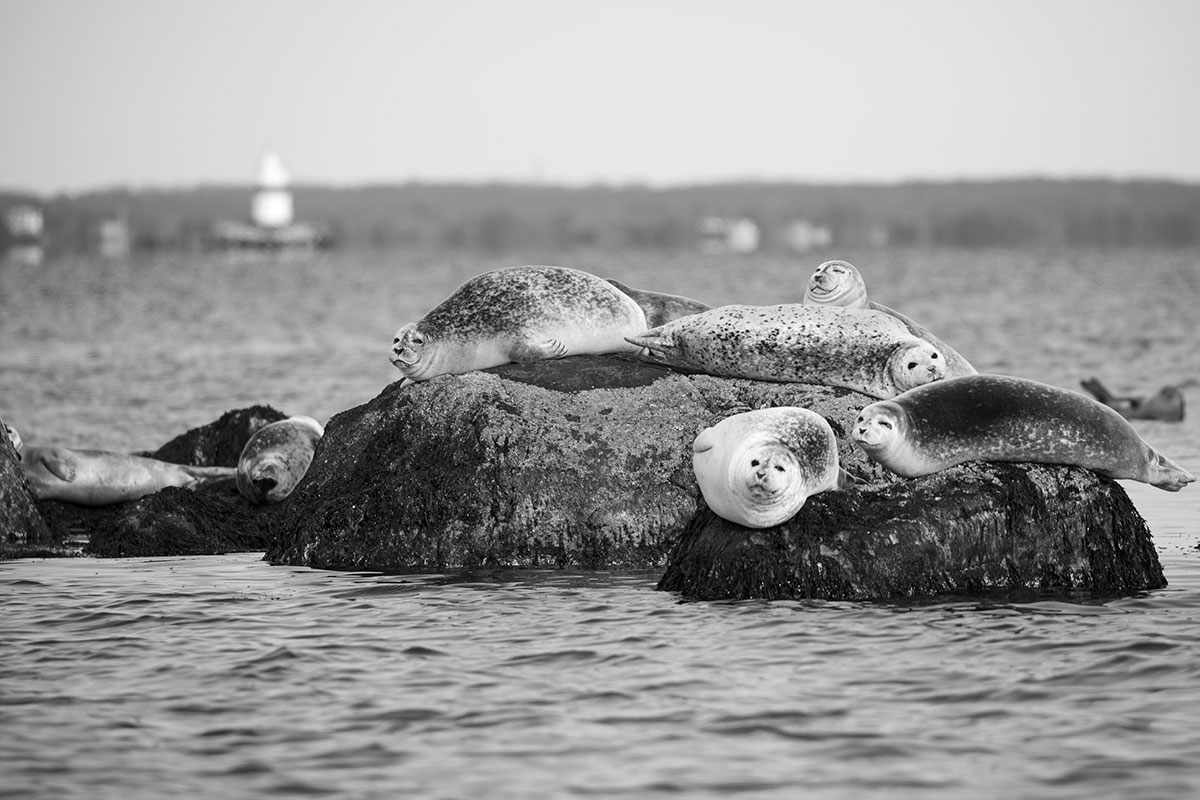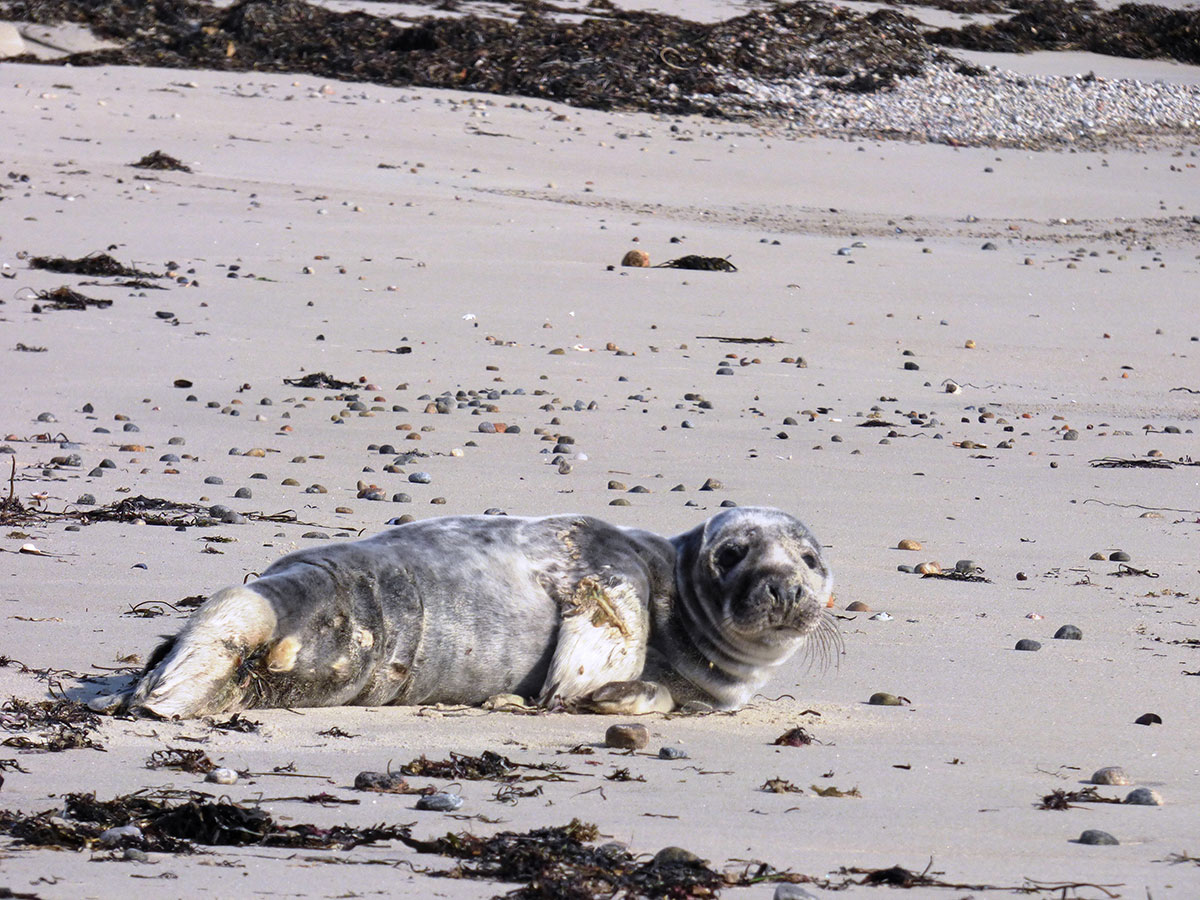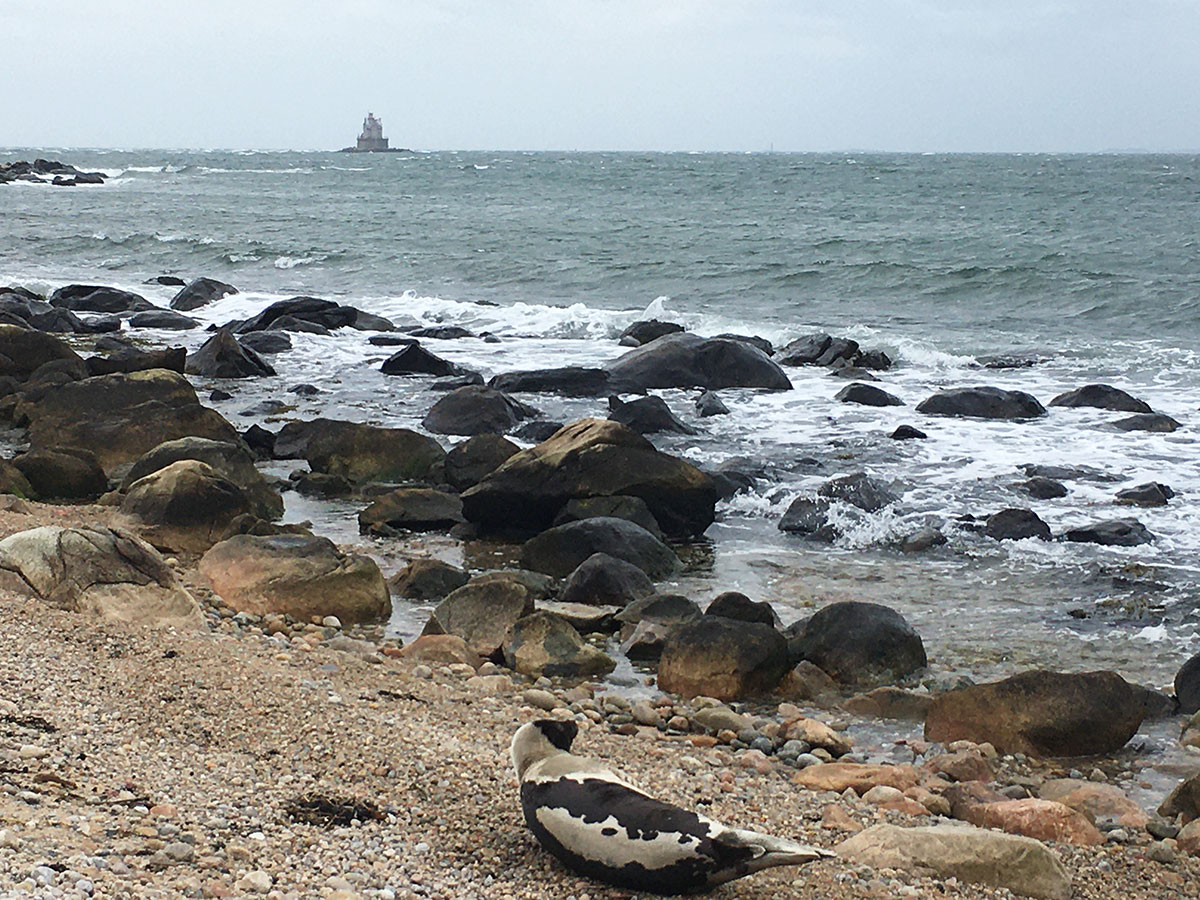ANNUAL EXHIBITION 2021
SEALS
Aerial of seals on rocks, Hungry Point
Drone photograph by Todd McCormack
Each winter as many as 4,000 seals migrate from colder northern waters into relatively warm Long Island Sound. One of the most prominent spots where hundreds of seals “haul out” at the eastern entrance to Long Island Sound is at Hungry Point, Fishers Island. (The origin of the name remains a mystery.)
Hungry Point with mainland in background
Photograph by John Wilton
When the Marine Mammal Protection Act of 1972 made seal hunting and harassment illegal, the seal population in New England and Long Island Sound rebounded dramatically. That trend has continued in the ensuing decades. Robert Nawojchik, Mystic Aquarium’s staff biologist at the time, is quoted in a 1998 New York Times article as saying that some ten years earlier (late 1980s) about 50 seals might be seen off Fishers Island. By 1998, he said that he was spotting as many as 300. (100 to 150 is a more typical count number.)
Boat intruding on seals, Hungry Point
April 2011
Photograph by John Wilton
Although organized seal watching boats offer a very positive educational experience that increases knowledge of and awareness about seals in our waters, sometimes individual boaters get too close. You are too close if you cause increased vocalization of seals, movement back into the water of the entire herd or solo seals, and/or disturbance from normal resting position, including lifting of heads to watch you. (Information taken from pamphlet written by Elizabeth Pomfret, Cape Cod Stranding Project.)
Solo Harbor Seal, Hungry Point
Photograph by Justine Kibbe
“Harbor seals weigh up to 285 pounds and measure up to six feet in length. Males are slightly larger than females…Harbor seals have short, dog-like snouts…Harbor seals haul out (rest) on rocks, reefs, beaches and drifting glacial ice when they aren’t traveling and/or foraging at sea. They haul out to regulate their body temperature, molt, interact with other seals, give birth, and nurse their pups. These seals also haul out to avoid predators and spend less time being watchful for predators than those that haul out alone.” Quote from NOAA Fisheries: fisheries.noaa.gov.
Stranded Gray Seal pup, Chocomount Beach
January 22, 2017
Photograph by Justine Kibbe
When stranded marine mammals are discovered on Fishers Island, residents who have taken a First Responder Training Course under the auspices of Mystic Aquarium are usually the first on the scene. They assess the situation and coordinate with the Aquarium as to a proper response. In this case, the stranded pup needed medical attention and was taken to the mainland aboard the ferry and transported to the Aquarium for immediate care and rehabilitation.
Stranded Harp Seal at Race Point
April 21, 2020
Photograph by Stephanie Hall
In the case of this stranded Harp Seal (male), suffering from a gash under his pectoral fin, some rest before a return to the sea was all that was needed. He reentered the waters off the southern shore of Fishers Island after several short migrations along South Beach.
Hungry Point Harbor Seals, Fishers Island NY
Video by Mark Munro

